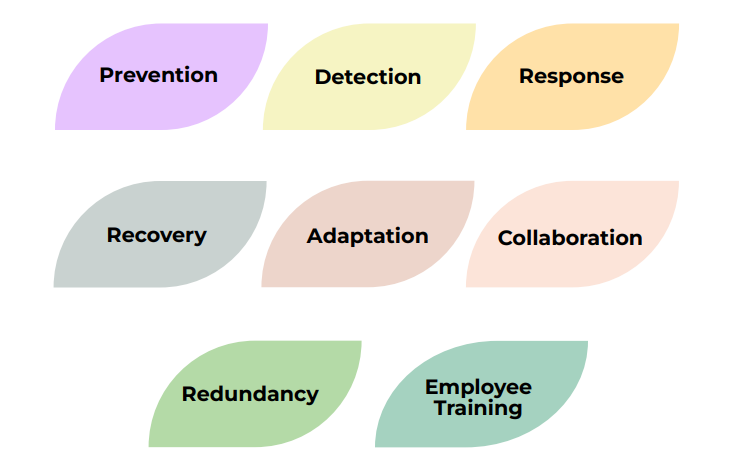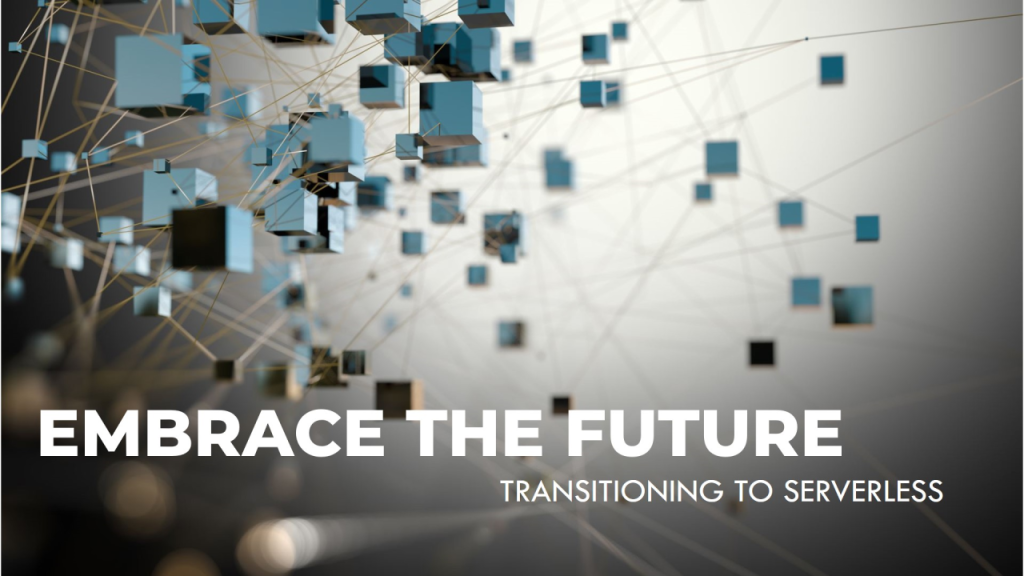With the ever-evolving IT Infrastructure and rapidly evolving threat landscape no organization today can truly say we are immune or safe from cyber-attacks. There are several factors that contribute to the rise in ransomware attacks. One key factor to note is the sophistication of the ransomware gangs. These days the ransomware gangs are equipped with the latest in technology and sophisticated techniques to infiltrate networks and encrypt data. Another factor is the growing availability of ransomware-as-a-service (RaaS) platforms. This makes it easy for even inexperienced hackers to launch attack on organizations.
There are several cyber-attacks taking place around us. And more specifically, the number of ransomware attacks has increased significantly each year and in the year 2023, there are about 10,000 attacks reported in the first quarter alone. This is a significant increase from 2022 for the same period.
Cyber resiliency pertains to an organization’s capacity to endure, adjust to, and bounce back from cyber-attacks or any other forms of malicious activities. It aims to limit the adverse effects on an organization’s operations, data, and overall functionality. Cyber resiliency encompasses a comprehensive set of tactics, procedures, technologies, and methodologies that are implemented to sustain an organization’s optimal functioning despite prevailing cyber threats.
Cyber resilience presents various advantages to an organization, which include:
- Minimized Financial Losses: Through the implementation of cyber resilience measures, an organization can reduce the financial impact caused by cyber-attacks, such as asset theft, revenue loss, and repair expenses.
- Compliance with Legal and Regulatory Requirements: Cyber resilience measures aid organizations in meeting legal and regulatory mandates concerning data protection, security, and privacy.
- Enhanced Security Culture and Internal Processes: By prioritizing cyber resilience, an organization can cultivate a robust security culture and establish efficient internal processes to address cyber risks effectively.
- Safeguarding of Brand and Reputation: Cyber-attacks can tarnish an organization’s reputation and brand. However, by adopting cyber resilience, organizations are better prepared to prevent cyber-attacks, respond promptly and efficiently to incidents, and maintain the trust of customers and stakeholders.
While we understand the benefits of a cyber resilience program it is imminent to note that the IT Governance framework provides guidelines for implementing effective cyber resilience within an organization. It consists of four key elements:
-
- Manage and Protect
- Focus on managing defences and protecting the organization from cyber threats.
- Includes implementing an information security program, policies, identity and access control, training and awareness, as well as physical and logical security measures.
- Identify and Detect
- Monitor the organization’s information and information systems for anomalies.
- Continuously observe and log security measures, conduct vulnerability and penetration testing, and actively detect potential incidents.
- Respond and Recover
- Quickly and effectively manage incidents to minimize damage and restore functionality.
- Have well-documented incident response and business continuity plans in place.
- Govern and Assure
- Involve the board and senior managers in overseeing and validating cyber resilience at the highest level of the organization.
- Implement a robust risk management program, conduct external audits or validations, and perform internal audits.
- Manage and Protect
Also, further in-depth classification of the areas above is listed below.

- Prevention: Preventive measures aim at reducing the likelihood of an attack taking place. It comprises of implementing robust cybersecurity measures to prevent cyberattacks, including firewalls, intrusion detection systems, access controls, and regular security audits.
- Detection: Employing advanced monitoring and detection tools to identify unusual or suspicious activities within the organization’s network or systems. This helps in detecting cyber threats as early as possible.
- Response: Developing well-defined incident response plans that outline the steps to take when a cyber incident occurs. This involves isolating affected systems, mitigating the impact, and taking appropriate measures to prevent the incident from spreading further.
- Recovery: Establishing procedures and protocols for recovering from cyber incidents and restoring normal operations. This may involve data recovery, system restoration, and ensuring the organization’s critical functions can resume.
- Adaptation: Continuously evaluating and improving cybersecurity practices based on the lessons learned from previous incidents. This includes updating policies, procedures, and technologies to address new and evolving threats.
- Redundancy: Implementing redundant systems and data backups to ensure that critical operations can continue even if primary systems are compromised.
- Employee Training: Providing ongoing cybersecurity training to employees to increase awareness of potential threats and best practices for mitigating them.
- Collaboration: Building partnerships with external organizations, such as law enforcement agencies, cybersecurity experts, and other industry stakeholders, to share threat intelligence and coordinate responses to cyber incidents.
In a more digitized experience, cyber resilience has grown as a pivotal component of organizational success. As cyber risks continue to develop and become more complex, stopping ahead of potential breaches and attacks is crucial. Below are some new trends in cyber resilience, emphasizing by what method organizations are adapting to safeguard against cyber-attacks.
Zero Trust Architecture
The concept of Zero Trust Architecture (ZTA) has acquired meaningful traction in recent age. This approach operates on the assumption that no user or system should be innately trustworthy, regardless of their location inside or outside the network. ZTA focuses on validating identities and continually listening to network traffic and user attitude to discover deviations. By adopting this approach, organizations have better control over their network and reduce the attack surface.
Extended Detection and Response (XDR)
XDR goes further than Endpoint Detection and Response (EDR) and includes the listening of various endpoints and security tiers across an organization’s IT foundation. This whole approach allows for better threat discovery by correlating data from multiple sources and providing an extensive view of potential security incidents. XDR solutions allow institutions to respond promptly to emerging risks and prevent them from spreading across other systems.
Cloud Security Resilience
The increased acceptance of cloud services has driven an increasing importance of cloud security resilience. Organizations are establishing tools and strategies to secure their cloud environments effectively. This contains executing correspondence and access administration controls, encrypting sensitive data, and monitoring for unauthorized access or configuration changes. As more critical operations move to the cloud, guaranteeing its protection has become a principal concern.
AI and Machine Learning in Cyber Resilience
Artificial Intelligence (AI) and Machine Learning (ML) are performing an important role in helping cyber resilience. These technologies can resolve boundless amounts of data in real-time, recognizing patterns and irregularities that go unnoticed by usual security measures. AI-stimulation systems reinforce warning discovery, automate incident reaction, and advance the overall effectiveness of cybersecurity operations.
Ransomware Preparedness and Recovery
The surge in ransomware attacks has necessitated efforts to strengthening ransomware preparedness and recovery. This involves frequently backing up critical data, evolving occurrence response plans particularly tailor-made to ransomware occurrence, and conducting cybersecurity training for staff members. Proactive measures can considerably reduce the impact of ransomware attacks and help reduce the reaction time to cyber-attacks.
Supply Chain Cybersecurity
Organizations’ cybersecurity is only as strong as the weakest link in their supply chain. As a result, there is a growing need on assessing and ensuring the cybersecurity posture of third-party vendors and partners. Rigorous evaluations, permissible contracts, and constant monitoring are suitable standard practices to lighten supply chain-accompanying high-tech risks.
In an era defined by digital revolution, cyber resilience has surpassed the world of IT and is critical to all businesses. Cyber resiliency recognizes that despite best efforts in preventing cyberattacks, determined attackers may still find ways to breach defences. Therefore, the focus is on minimizing the impact of such breaches and ensuring that the organization can recover quickly and effectively. In this article, we cover the evolving types of cyber threats, and the innovative approaches organizations are adopting to improve their strength to endure and bounce back from potential attacks. As the threat landscape develops, staying informed about these trends will be essential for organizations planning to build a powerful and adaptable cybersecurity framework. Cyber resilience is a holistic approach that goes beyond traditional cybersecurity measures to encompass broader organizational preparedness and adaptability.

Author
Bhavani Damodaran
Bhavani is a Technical Manager, Information Security at GS Lab | GAVS. She has held numerous positions of responsibility in areas of Information Security such as risk management, IT controls, audits and compliance. Her expertise involves in handling IT risks, security control framework designing and assessing digital tools. She is an avid traveler and is passionate about driving.




